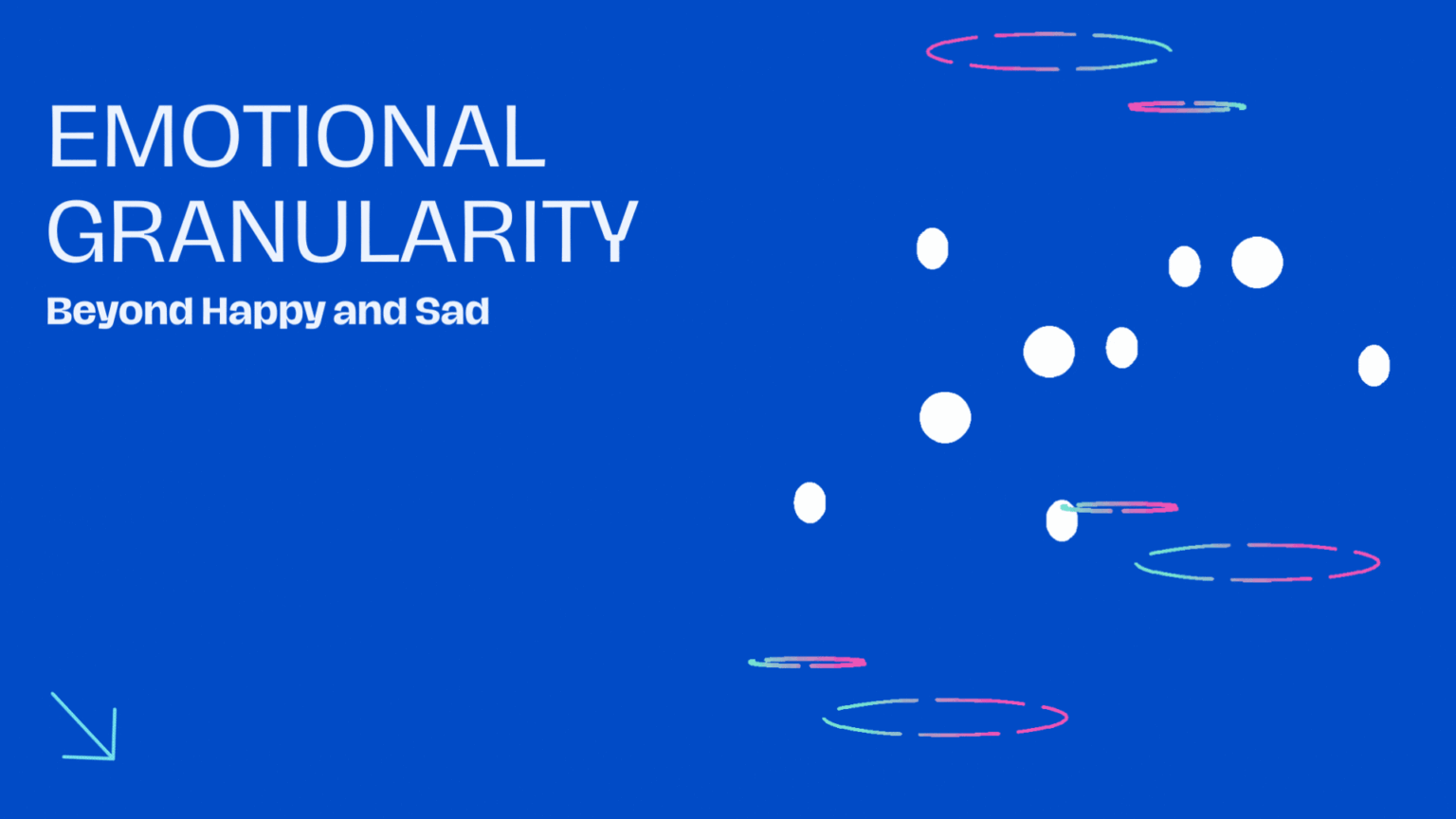Digital Detox Enhancing Real-World Connections in a Digitally Saturated World
In today’s digital age, it has become increasingly important to take a step back from our devices and reconnect with the real world. The constant connectivity and presence of digital devices in our lives can have negative effects on our mental and physical well-being. This is where the concept of digital detox comes into play. A digital detox is a period of time where individuals unplug and disconnect from their digital devices in order to reduce screen time and enhance real-world connections.
The Importance of Digital Detox
What is digital detox and why is it necessary?
Digital detox refers to taking a break from digital devices and consciously choosing to engage in offline activities. It is necessary in a digitally saturated world as it allows individuals to reduce their screen time, limit the distractions caused by digital devices, and improve their overall well-being. By disconnecting from technology, individuals can prioritize real-world connections and improve their mental and physical health.
Benefits of disconnecting from digital devices
Disconnecting from digital devices offers a wide range of benefits. Firstly, it can improve productivity. Excessive screen time can lead to distractions and hinder our ability to focus. By taking a break from digital devices, individuals can regain focus, improve concentration, and boost their productivity levels.
Additionally, a digital detox can have a positive impact on our physical health. The excessive use of digital devices can lead to sedentary behavior and contribute to a sedentary lifestyle, which is known to have negative effects on overall health. By disconnecting from digital devices, individuals can engage in offline activities such as exercising, spending time in nature, and pursuing hobbies, which can improve physical health and reduce stress levels.
How to successfully achieve a digital detox
Achieving a successful digital detox requires planning and determination. Here are some tips to help you effectively disconnect from your digital devices:
1. Set clear goals: Determine why you want to undergo a digital detox and set specific goals for the duration and scope of your detox.
2. Establish boundaries: Set boundaries for when and where you will use digital devices. For example, designate specific times each day for checking emails or using social media.
3. Remove notifications: Disable unnecessary notifications on your devices to minimize distractions and interruptions.
4. Engage in offline activities: Fill your time with activities that do not involve screens, such as reading a book, pursuing a hobby, or spending time in nature.
5. Practice mindfulness: Be mindful of your technology usage and strive to be fully present in the moment. By being mindful, you can make conscious choices about when and how you use digital devices.
By implementing these strategies, you can successfully achieve a digital detox and experience the benefits of stepping away from the digital world.
Reducing Screen Time for Better Productivity
The negative effects of excessive screen time
Excessive screen time can have various negative effects on our well-being. Firstly, spending too much time in front of screens can lead to physical health issues such as eye strain, headaches, and poor posture. Additionally, excessive screen time can disrupt sleep patterns due to the exposure to blue light emitted by digital devices, leading to poor sleep quality and fatigue.
In terms of productivity, excessive screen time can result in reduced focus and decreased attention span. The constant presence of notifications and distractions from digital devices can hinder our ability to concentrate on tasks and can lead to procrastination.
Tips for managing screen time and improving productivity
To manage screen time and improve productivity, it is important to establish healthy habits and boundaries with technology. Here are some tips:
1. Set screen time limits: Determine a specific amount of time you will allow yourself to spend on screens each day and use apps or features that can help you track and limit your usage.
2. Create tech-free zones: Designate certain areas or times in your home where digital devices are not allowed. This can help promote a healthier relationship with technology and provide opportunities for real-world connections.
3. Practice the 20-20-20 rule: Every 20 minutes, take a 20-second break to look at something 20 feet away. This can help reduce eye strain and provide a short break from screen time.
4. Utilize productivity tools: There are various productivity tools and apps available that can help you stay focused and manage your tasks effectively. Explore these options and find what works best for you.
By implementing these strategies, you can reduce your screen time, improve productivity, and establish a healthier relationship with technology.
Physical Health and Well-being in a Digital World
The impact of digital devices on physical health
The increased use of digital devices has had a significant impact on our physical health. Sitting for long periods in front of screens can lead to a sedentary lifestyle, which has been linked to various health issues, including obesity, cardiovascular disease, and musculoskeletal problems. Additionally, excessive screen time can contribute to poor sleep quality, which further affects our overall physical well-being.
Offline activities for a healthier lifestyle
To counteract the negative effects of excessive screen time and enhance physical health, engaging in offline activities is crucial. Here are a few suggestions:
1. Exercise regularly: Participate in physical activities that you enjoy, such as walking, jogging, cycling, or practicing yoga. Regular exercise can improve cardiovascular health, boost mood, and reduce the risk of chronic conditions.
2. Spend time in nature: Take advantage of the outdoors and spend time in nature. Whether it’s going for a hike, visiting a park, or simply sitting in a garden, spending time in nature can reduce stress levels, improve mood, and enhance overall well-being.
3. Pursue offline hobbies: Find activities that you can enjoy without the use of digital devices. This could include painting, knitting, cooking, or playing a musical instrument. Hobbies provide a break from digital saturation and promote creativity and personal fulfillment.
By incorporating these offline activities into your routine, you can improve your physical health and reduce the negative effects of excessive screen time.
Enhancing Social Interaction Through Digital Detox
The role of digital distractions in limiting social interaction
In a digitally saturated world, digital distractions can limit our social interactions. Constantly checking social media platforms and spending excessive time online can take away from real-world connections and meaningful relationships. This can lead to feelings of isolation and detachment, despite being surrounded by a connected world.
The benefits of spending time in nature for real-world connections
Spending time in nature can offer numerous benefits for enhancing real-world connections. Nature provides a peaceful and serene environment where individuals can engage in activities together and foster deeper relationships. From going on hikes or picnics to simply having conversations in natural settings, nature encourages presence, open communication, and a sense of connection with others.
Ways to reconnect with others in a digitally saturated world
Reconnecting with others in a digitally saturated world requires conscious effort and intention. Here are some ways to enhance your social interactions:
1. Plan tech-free activities: Organize activities with friends or loved ones that do not involve the use of digital devices. This could include board game nights, cooking together, or going on outdoor adventures.
2. Practice active listening: When engaging in conversations, make a conscious effort to be fully present and actively listen to what others are saying. Put away your phone, maintain eye contact, and show genuine interest in the conversation.
3. Join local community groups: Explore local community groups or organizations where you can engage in activities and meet like-minded individuals. This is a great way to expand your social circle and create meaningful connections.
By taking these steps, you can enhance your social interactions, foster deeper relationships, and create a balanced approach to technology use in a digitally saturated world.
Improving Sleep Patterns and Well-being
The impact of digital devices on sleep quality
The use of digital devices before bedtime can significantly impact sleep quality. The blue light emitted by screens can interfere with the production of melatonin, a hormone that regulates sleep. This can result in difficulty falling asleep and disrupted sleep patterns.
Tips for improving sleep through digital detox
To improve sleep patterns and well-being, it is important to establish healthy sleep habits and limit digital device usage before bed. Here are some tips:
1. Set a digital curfew: Establish a specific time each night when you will stop using digital devices. This allows your mind and body to unwind before bedtime.
2. Create a bedtime routine: Develop a relaxing routine before sleep that does not involve screens. This could include reading a book, taking a warm bath, or practicing relaxation exercises.
3. Avoid screen time before bed: Limit exposure to screens at least an hour before bedtime. Instead, engage in calming activities that promote relaxation
Digital detox enhancing real-world connections in a digitally saturated world
In today’s digitally saturated world, it can be easy to feel overwhelmed and disconnected. Constantly being bombarded with notifications and spending excessive screen time can take a toll on our mental and physical health. This is where the concept of digital detox comes in. Digital detox refers to the practice of taking a break from digital devices and consciously disconnecting from the online world. It is about stepping away from the digital and embracing the real world, thereby enhancing our real-world connections.
What is digital detox and why is it important?
Understanding the concept of digital detox
Digital detox is essentially a period of time during which individuals unplug and disconnect from their digital devices. This means taking a break from social media platforms, apps, emails, and anything else that saturates our lives in the digital realm. It involves consciously setting boundaries and limiting our digital distractions, allowing us to focus on being fully present in the real world.
The benefits of disconnecting from digital devices
The benefits of a digital detox are manifold. Firstly, it allows us to improve our relationship with technology. By taking a step back and reducing our reliance on digital devices, we can regain control over our lives and use technology in a more mindful and intentional manner. It helps create a healthier balance between the digital and real world.
Furthermore, engaging in offline activities during a digital detox fosters meaningful social interaction. Instead of spending hours scrolling through social media feeds, we can use that time to engage in hobbies, have face-to-face conversations, or simply spend time in nature. These activities help strengthen our connections with others and cultivate a sense of belonging in the real world.
How to practice mindfulness offline
Mindfulness plays a crucial role in a successful digital detox. It involves being fully present in the moment and paying attention to our thoughts, feelings, and surroundings. Practicing mindfulness offline can include activities such as meditation, deep breathing exercises, or simply taking a quiet walk in nature. By practicing mindfulness, we can enhance our overall well-being and improve our ability to connect with others.
How does excessive screen time affect us?
The impact of screen time on productivity
Excessive screen time can significantly impact our productivity. Constantly being bombarded with notifications and distractions can make it difficult to focus on tasks at hand. Research has shown that excessive screen time leads to decreased productivity and increased likelihood of making mistakes. By reducing our screen time and embracing a digital detox, we can reclaim our productivity and be more efficient in our daily lives.
The negative effects of excessive screen time on physical health
Spending a large amount of time staring at screens can have detrimental effects on our physical health. The blue light emitted by digital devices can disrupt our sleep patterns, leading to poor quality of sleep and increased fatigue. Additionally, excessive screen time is often associated with a sedentary lifestyle, which can contribute to weight gain and other health issues. Taking a break from digital devices and spending time in nature can help recharge and reconnect with our physical well-being.
Tips for a successful digital detox
To have a successful digital detox, it is important to set boundaries and limit digital distractions. This can include creating tech-free zones in our homes or establishing designated times to be offline. It is also beneficial to replace screen time with offline activities such as reading a book, pursuing a hobby, or engaging in physical exercise. By consciously reducing our screen time and investing in meaningful offline activities, we can reap the benefits of a digital detox.
How can digital detox enhance real-world connections?
Improving our relationship with technology
One of the key benefits of a digital detox is the opportunity it provides to improve our relationship with technology. By taking a break from digital devices, we can break free from the constant need to be connected and use technology more intentionally. This allows us to be more present in our interactions with others and foster genuine connections.
The role of mindfulness in fostering meaningful social interaction
Mindfulness plays a crucial role in enhancing our real-world connections. By practicing mindfulness offline, we become more attuned to the present moment and the people around us. This enables us to listen actively, engage in meaningful conversations, and deepen our social connections. Mindfulness helps us become more empathetic and understanding, thereby enriching our relationships.
Engaging in offline activities to strengthen connections
Engaging in offline activities during a digital detox creates opportunities for us to strengthen our connections with others. Whether it’s spending quality time with loved ones, participating in group activities, or pursuing personal hobbies, these offline activities allow us to bond with others on a deeper level. By stepping away from the digital and investing in real-world connections, we can foster a sense of belonging and fulfillment.
What are the practical steps to take for a successful digital detox?
Setting boundaries and limiting digital distractions
The first practical step in embarking on a digital detox is setting boundaries and limiting digital distractions. This can involve establishing designated times to be offline, turning off notifications, and creating tech-free zones in our living spaces. By creating a physical and mental space free from digital interferences, we give ourselves the opportunity to fully disconnect and engage in the offline world.
Spending time in nature to recharge and reconnect
Spending time in nature is another practical step that can greatly enhance the effectiveness of a digital detox. Nature has a calming effect on our mind and body, allowing us to recharge and reconnect with our surroundings. Whether it’s going for a hike, having a picnic in the park, or simply taking a walk on the beach, immersing ourselves in the natural world can provide a much-needed respite from the digitally saturated environment.
Creating tech-free zones and establishing designated times to be offline
Creating tech-free zones in our homes and establishing designated times to be offline are practical strategies that can facilitate a successful digital detox. Designating specific areas or rooms where digital devices are not allowed encourages us to engage in offline activities and connect with others. Similarly, setting aside dedicated time to be offline, such as during meals or before bedtime, enables us to focus on our relationships and well-being without the distractions of technology.
How can a digital detox positively impact our overall well-being?
The role of digital detox in improving sleep patterns
A digital detox can have a significant impact on our sleep patterns. The blue light emitted by digital devices disrupts our circadian rhythm, making it difficult to fall asleep and obtain quality sleep. By reducing our screen time before bed and practicing a digital detox, we allow our bodies to adjust and improve our sleep quality. Better sleep leads to improved overall well-being and better cognitive functions.
The effects of reducing screen time on mental health and stress levels
Reducing screen time and engaging in a digital detox can have positive effects on our mental health and stress levels. Constant exposure to digital media and the pressures of the online world can contribute to anxiety, stress, and feelings of inadequacy. Taking a break from digital devices allows us to gain perspective, reduce stress, and focus on activities that bring us joy and fulfillment.
Finding balance in a digitally saturated world
In today’s digital age, finding balance between the digital and real world is crucial for our overall well-being. Engaging in a digital detox helps us regain control over our use of digital technology and find a healthy balance. It allows us to be more intentional in our interactions, foster meaningful connections, and create a harmonious relationship with technology.
Conclusion
Embracing the benefits of digital detox in a connected world
In a digitally saturated world, a digital detox is a powerful tool that can enhance our real-world connections. By disconnecting from digital devices and engaging in offline activities, we can improve our relationship with technology and foster meaningful social interactions. Practicing mindfulness offline and setting boundaries for digital distractions are practical steps we can take to make our digital detox successful.
Finding harmony between the digital and real world
A successful digital detox not only positively impacts our overall well-being but also helps us find harmony between the digital and real world. By reducing screen time, improving sleep patterns, and finding balance in a digitally saturated world, we can embrace the benefits of a digital detox and create a more fulfilling and connected life.
Q: What is a digital detox?
A: A digital detox refers to the intentional period of time during which a person disconnects from digital devices and the internet. It is a way to take a break from the constant use of technology and focus on real-world connections and experiences.
Q: Why should I consider a digital detox?
A: There are several reasons why you should consider a digital detox. Firstly, it allows you to take a step back and regain control over your time. It also helps in reducing stress and anxiety caused by being constantly connected. Additionally, a digital detox can enhance your ability to form and maintain meaningful relationships, as it gives you the opportunity to fully engage with the people around you.
Q: How can a digital detox enhance real-world connections?
A: A digital detox allows you to be fully present in the moment and engage with the people around you. By disconnecting from digital devices, you are able to give undivided attention to your loved ones, have meaningful conversations, and create lasting memories. It helps in building deeper connections and fostering a sense of presence in your relationships.
Q: Who can benefit from a digital detox?
A: Anyone who feels overwhelmed by the constant use of technology and the need to be digitally connected can benefit from a digital detox. It is particularly beneficial for digital natives, such as college students, who spend a significant amount of time online. A digital detox can help in reevaluating their digital habits and finding a balance between their digital and real-world lives.
Q: How often should I take a digital detox?
A: The frequency of digital detoxes depends on individual preferences and needs. Some people prefer to take regular breaks from digital devices, such as once a week or once a month. Others may choose to have more extended periods of disconnection, like a digital detox holiday. The important thing is to find a balance that works for you and allows you to maximize the benefits of disconnecting from the digital world.
Q: How can I maximize my digital detox?
A: To maximize your digital detox, it is important to set clear goals and boundaries. You can start by identifying the activities or apps that consume most of your time and create a plan to limit or eliminate them during your detox. It is also helpful to engage in activities that promote real-world connections, such as spending time with loved ones, pursuing hobbies, or enjoying nature. Setting aside dedicated time for reflection and self-care can also enhance the effectiveness of your digital detox.
Q: What are the signs that I need a digital detox?
A: There are several signs that indicate the need for a digital detox. These include feeling anxious or irritable when unable to use your mobile phone or access the internet, spending excessive amounts of time mindlessly scrolling through social media, experiencing a lack of digital balance, or feeling overwhelmed by the constant connectivity. If you notice these signs, it may be time to take a break and disconnect from the digital world.
Q: How can I know if my digital detox is successful?
A: The success of a digital detox can be measured in various ways. Some indicators might include an increased sense of presence in real-world interactions, improved focus and productivity, reduced stress levels, better sleep quality, and a greater appreciation for offline activities. It is important to reflect on your digital detox journey and evaluate how it has positively impacted your overall well-being.
Q: What are the benefits of taking regular breaks from digital devices?
A: Regular breaks from digital devices have numerous benefits. They allow you to recharge and rejuvenate, reducing the risk of burnout. Taking breaks can also improve your mental well-being, as it gives your brain a chance to rest from the constant stimulation of technology. Moreover, regular digital detoxes can help in regaining control over your time and prioritizing real-world connections and experiences.
Q: How can I reduce the temptation to use my mobile phone during a digital detox?
A: There are a few strategies you can employ to reduce the temptation to use your mobile phone during a digital detox. Firstly, you can turn on the “Do Not Disturb” mode or place your phone in a different room to minimize distractions. You can also remove or uninstall apps that you find particularly distracting. Additionally, engaging in activities that require your full attention, such as exercising, reading, or practicing mindfulness, can help in diverting your focus away from your phone.










